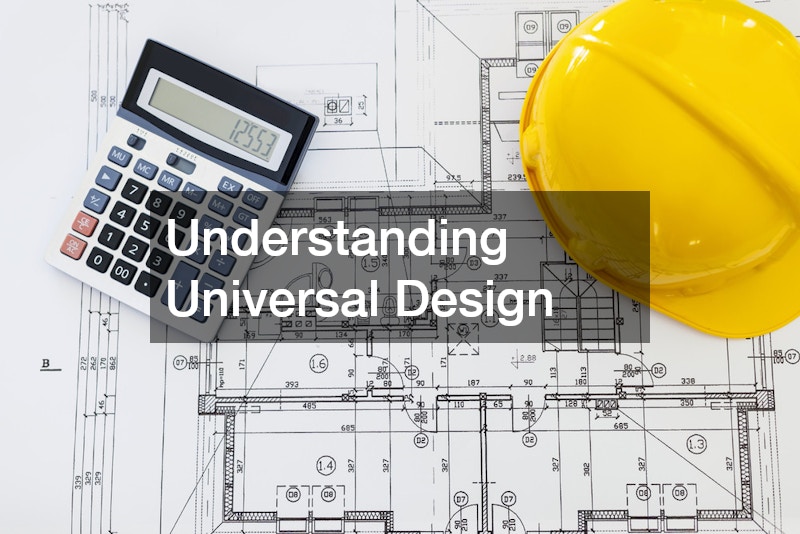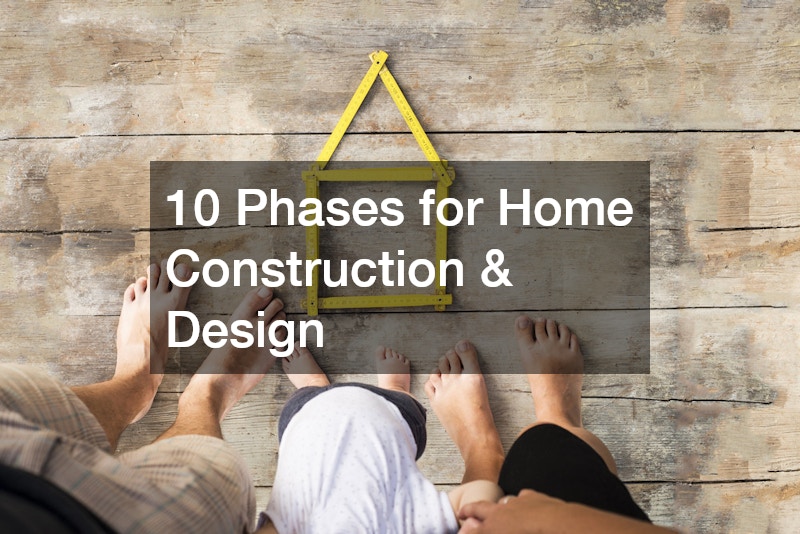
Creating a home involves various intricate stages catering to modern needs, sustainability, and versatility for universal design in house plans. This article aims to provide a comprehensive guide through these phases, ensuring a functional and appealing living environment.
1. Understanding Universal Design

Definition and Principles
Universal design in house plans refers to crafting a home environment that is accessible and functional for everyone, regardless of age or physical abilities. The key principles include equitable use, flexibility, and simplicity in design. This approach ensures that the home remains usable for diverse residents over time.
Benefits of Universal Design
Adopting universal design house plans offers numerous benefits, including increased accessibility and safety. These designs often lead to healthier living environments and reflect innovative ergonomics. Ultimately, they enhance the marketability and longevity of a property.
Historical Perspective
Historically, universal design emerged as a response to the growing needs of an aging population. Initially focused on public spaces, the concept gradually permeated residential architecture as designers recognized the importance of inclusive living spaces. Over the decades, universal design has evolved, emphasizing elegance along with functionality.
Challenges in Implementation
Despite its benefits, implementing universal design house plans comes with challenges such as increased initial costs and the need for specialized training. Builders and designers may face limitations in modifying traditional home layouts. Resistance from stakeholders due to perceived aesthetic changes can also pose a challenge.
Future Trends in Universal Design
Looking ahead, future trends in universal design house plans aim to incorporate advanced technology seamlessly. Sustainable materials and energy-efficient solutions are becoming core elements. Developers are now exploring prefabricated solutions to cater to custom universal design demands efficiently.
2. Choose the Right House Plan
Understanding Your Needs
Choosing the right house plan begins with understanding your needs and lifestyle preferences. Consider the number of occupants, room functions, and lifestyle activities. Make sure to balance between aspirational features and practical requirements.
Types of House Plans
The market offers a variety of house plan types, from modest bungalows to sprawling estates. Each plan type caters to different tastes, budgets, and land constraints. Evaluating these options against your needs is crucial in narrowing down a suitable plan.
Factors to Consider
Important factors include budget constraints, environmental considerations, and future-proofing. Proximity to essential services and public amenities are also critical elements. Engage with a home improvement contractor to ensure that practical concerns align with the dream designs.
Consulting with Professionals
Consulting with reputable professionals, such as architects and builders, provides valuable insights and avoids costly errors. The best architecture firms offer expertise in integrating cutting-edge technology and optimizing space. Consequently, their involvement significantly enhances the planning process.
Modifying Existing Plans
Once a plan is identified, the need for modifications often arises to reflect personal tastes or situational demands. Modifying a plan should preserve the integrity of universal design principles. Professional advice ensures that alterations do not compromise efficiency or safety.
3. The Initial Steps in Home Construction
Site Selection
Site selection is a foundational step that affects all subsequent construction phases. Consider factors like geographical stability, climate conditions, and land topography. Universal design house plans benefit from flat, accessible locations ensuring ease of access.
Budget Planning
Creating a comprehensive budget plan at this stage is essential to staying on track financially. Account for unexpected expenses and prioritize essential features. Engaging a home building contractor during this phase can provide realistic cost assessments.
Acquiring Permits
Permit acquisition is a legal requirement and serves as an assurance of compliance with building codes. The process can be cumbersome, necessitating patience and due diligence. Working with experienced contractors streamlines the permitting process.
Design and Architecture
The design and architecture phase turns visions into tangible plans compliant with universal design standards. Collaborative efforts with the best architecture firms help produce functional and aesthetically appealing outcomes. Prioritize sustainable and adaptive features during plan approval.
Selecting a Contractor
Selecting a reputable contractor, such as a countertop installer, is crucial for the success of house and land projects. Vet contractors thoroughly based on experience, reputation, and ability to follow universal design house plans. Formulating a contract that includes timelines and budget matters is essential.
4. The Importance of Sustainable Building Materials

Benefits of Sustainability
Sustainable building materials are integral to creating eco-friendly homes. They contribute to improved air quality, reduced waste, and energy efficiency. Their use aligns with the ecological aspects of universal design house plans.
Types of Sustainable Materials
Sustainable materials range from recycled wood and metal to eco-friendly concrete and bamboo. Each material offers unique benefits, suitability, and appeal. Selection should support the overarching principles of durability and environmental impact.
Cost Analysis
While often perceived as expensive, many sustainable materials present cost-effective solutions over time through energy savings and longevity. Conducting a thorough cost analysis will illuminate long-term economic benefits. Appropriate budgeting can bridge initial cost disparities.
Environmental Impact
Using sustainable materials reduces the overall carbon footprint of a house. Incorporating these into universal design house plans benefits not only the residents but also the environment. The energy efficiency and resourcefulness of these materials enhance their appeal.
Long-term Benefits
Sustainable building materials support the creation of resilient homes with long-term benefits. These materials grow increasingly important in the context of climate change and resource scarcity. Their incorporation is a testament to responsible construction practices.
5. Integrate Energy Efficiency in Your Design
Energy Efficient Appliances
Integrating energy-efficient appliances with the help of an HVAC service is a key consideration in sustainable home design. These appliances consume less power, reducing electricity bills while promoting eco-friendliness. Emphasizing their inclusion supports universal design house plans aimed at sustainability.
Insulation Techniques
Proper insulation techniques are paramount in maintaining thermal comfort and reducing heating/cooling costs. Materials like cellulose and fiberglass offer excellent insulating properties. Invest in high-quality insulation to complement energy efficiency.
Solar Power Integration
Solar power is a burgeoning option for powering homes sustainably. Installing panels supports energy independence and cost savings. Consider the design of solar power systems early in the universal design house plans to optimize positioning and effectiveness.
Efficient Lighting Solutions
Efficient lighting solutions such as LEDs minimize energy waste and last longer compared to traditional bulbs. Well-thought-out lighting designs enhance aesthetics and functionality. Consult an electrician for recommendations tailored to specific room needs.
Water Conservation Methods
Water conservation is integral to comprehensive energy efficiency strategies. Incorporate low-flow fixtures, smart irrigation, and rainwater harvesting into design plans. These methods align with environmental goals in universal design house plans and offer economic benefits.
6. The Latest Trends in Home Interiors
Color Schemes and Textures
Home interiors reflect personal taste and current design trends through colors and textures. Neutral palettes with strategic splashes of vibrant colors are trending. Combining modern aesthetics with universal design house plans ensures timeless appeal and functionality.
Modern Furniture Design
Contemporary furniture designs focus on versatility and comfort, often incorporating sustainable materials. Furniture add-on items similar to a carpet require careful consideration and a carpet installation service. Sleek, multi-functional pieces complement minimalistic interior styles. Choosing furniture that aligns with universal design principles enhances space usage and accessibility.
Smart Home Technologies
Smart technologies are revolutionizing home interiors through seamless integration and convenience. These systems control lighting, climate, and security, enhancing the homeowner’s experience. Embedding smart tech in universal design house plans promotes future-proofing.
Open Floor Plans
Open floor plans are a prevalent trend that promotes spatial connectivity and flexibility, aligning with universal design ideals. They make homes feel larger and foster interaction. Consulting a home building contractor ensures structural changes accommodate this modern demand.
Eco-friendly Décor
Eco-friendly décor uses sustainable materials, reducing environmental impact while maintaining style. This trend includes reclaimed wood, natural fibers, and recycled products. Eco-friendly choices resonate with the fundamental ethics of universal design house plans.
7. Plan for Future-proofing Your Home

Adapting to Technological Changes
Planning for technological evolution is vital to future-proofing a home. Smart wiring and adaptable infrastructure keep homes relevant in the digital age. Universal design house plans can integrate these elements for long-lasting relevance.
Flexible Spaces Design
Creating flexible spaces accommodating multiple functions maximizes utility and adaptability. This approach ensures that rooms can transform with different needs over time. Designing such spaces requires innovative thinking and a keen understanding of future trends.
Storage Solutions
Effective storage solutions are crucial for maintaining an organized and efficient home environment. Innovative cabinetry and built-ins provide ample space without sacrificing aesthetics. Designing storage-efficient homes aligns with universal design house plans.
Maintenance and Durability
Focusing on materials and finishes that require minimal maintenance while being durable is key to sustainability. Such choices alleviate the burden of regular upkeep, providing peace of mind. Engage with reliable contractors for expert advice and execution.
Designing for Aging in Place
Designing for aging in place supports longevity in the residential environment. Features such as non-slip surfaces, handrails, and accessible appliances enhance safety. Universal design house plans naturally incorporate these elements, ensuring lifelong convenience.
8. The Best Practices for Efficient Project Management
Setting a Timeline
Each construction project needs a meticulously crafted timeline to track progress. Include realistic milestones and contingencies for potential delays. A well-structured timeline helps manage home building efficiently and prevents unwanted surprises.
Communication Strategies
Clear and effective communication strategies promote collaboration among stakeholders. Regular updates and transparent dialogue ensure everyone is aligned with goals. Implementing these strategies fosters a smooth and successful construction process.
Resource Allocation
Efficient resource allocation is pivotal to managing costs and optimizing productivity. Prioritize critical components to align with budgetary constraints. Universal design house plans can guide the prioritization and allocation of resources effectively.
Risk Management
Risk management involves identifying potential threats and devising mitigation strategies beforehand. Effective planning minimizes disruptions, maintaining project momentum. Engaging experienced professionals ensures comprehensive risk assessments.
Quality Assurance
Quality assurance processes verify that construction adheres to established standards. Regular inspections assess compliance and workmanship. Partnering with professional services reinforces quality standards, ensuring successful outcomes.
9. Incorporate Safety and Security in Home Design
Safe Material Use
Incorporating safe materials mitigates health risks and contributes to a safe living environment. Opting for non-toxic paints and finishes reflects responsible design practices. Ensure that universal design house plans meet modern safety standards.
Fire Safety Measures
Fire safety features must be an integral part of any home design. Features like sprinkler systems, smoke alarms, and fire-resistant materials are essential. Consult with specialists to integrate these safeguarding components effectively.
Security Systems and Technology
Modern security systems enhance residential safety through sophisticated technology. Installations such as CCTV, alarm systems, and smart locks reinforce security. Ensuring secure environments align with design principles.
Childproofing Strategies
Incorporating childproofing strategies minimizes hazards associated with curious young occupants. Products like outlet covers, corner guards, and door locks add layers of security. Designing child-safe environments demonstrates foresight and care.
Emergency Preparedness
Design elements like emergency plans, escape routes, and backup power sources support preparedness. Proper planning and proactive thinking ensure readiness during unforeseen events. Homes equipped with these features enhance resident confidence.
10. Know About the Finishing Touches

Landscaping Techniques
Professional landscaping techniques transform outdoor spaces, adding both beauty and functionality. Focus on native plants and efficient irrigation systems for sustainability. These finishing touches reflect the charm and character of universal design house plans.
Paint and Finishes
Choosing appropriate paint colors and finishes significantly impacts a home’s atmosphere. Consider eco-friendly options that contribute to indoor air quality. The right choice harmonizes with the overall décor and personal aesthetic.
Furniture and Furnishings
The selection of furniture and furnishings should complement the home’s aesthetic and functional needs. Opt for pieces that balance form and utility, reflecting universal design values. Consider durability, sustainability, and overall harmony with the interior design.
Lighting Installation
Innovative lighting installations illuminate spaces effectively, supporting both function and style. Proper placement enhances spaces while highlighting architectural features—partner with an electrician to ensure safe and efficient installation.
Inspection and Approval
A thorough inspection ensures all work complies with codes and universal design house plans. Detailed assessments by professionals, such as a local roofing company, guarantee safety and quality. The final approval marks the culmination of a successful construction project.
Thoughtful planning and execution of each phase create a home that is aesthetically pleasing and functionally robust. Universal design house plans ensure that homes remain adaptable, sustainable, and relevant over time, bridging the gap between practical needs and aspirational desires.
